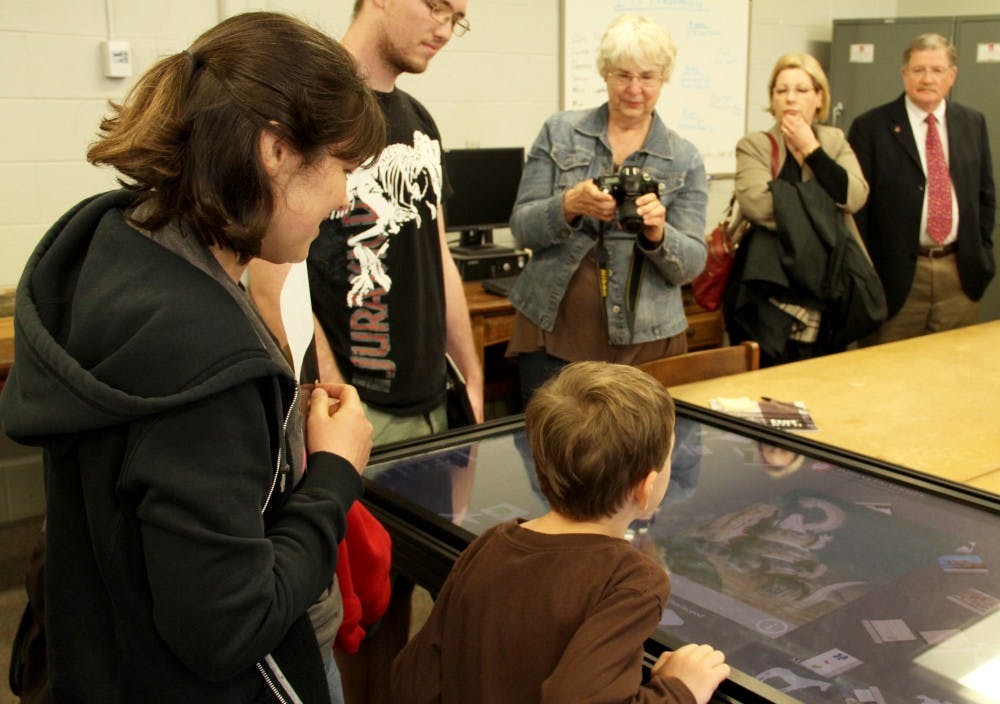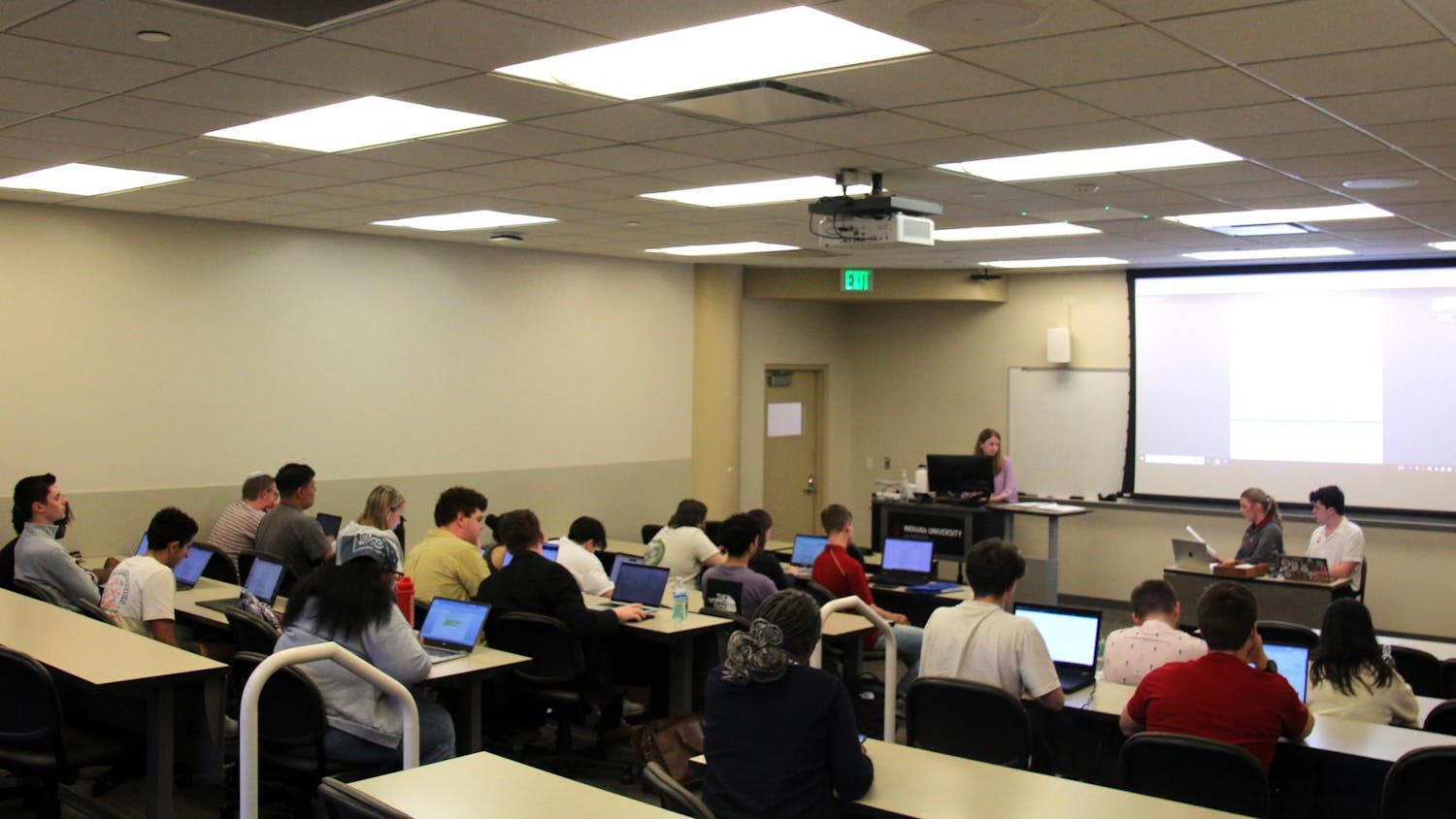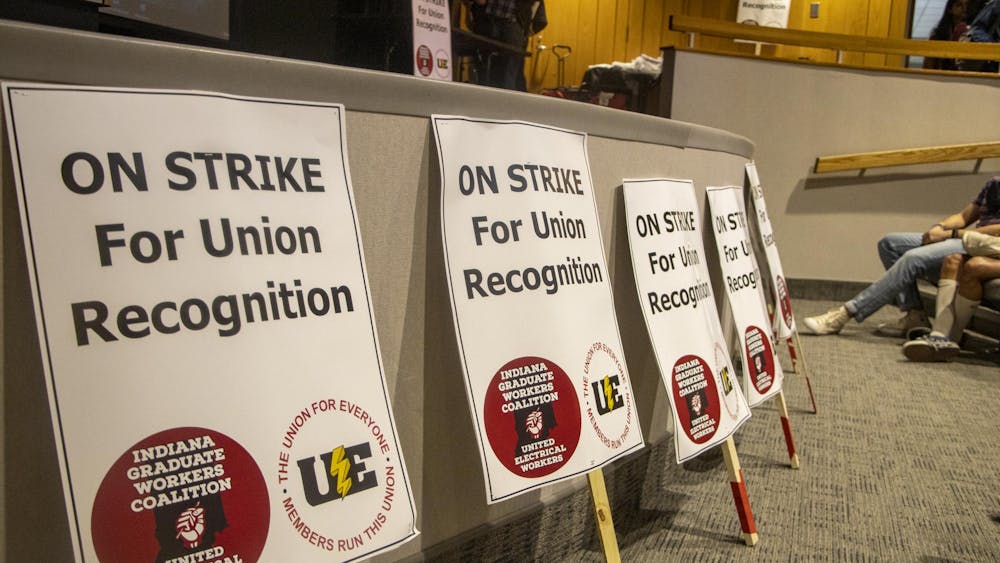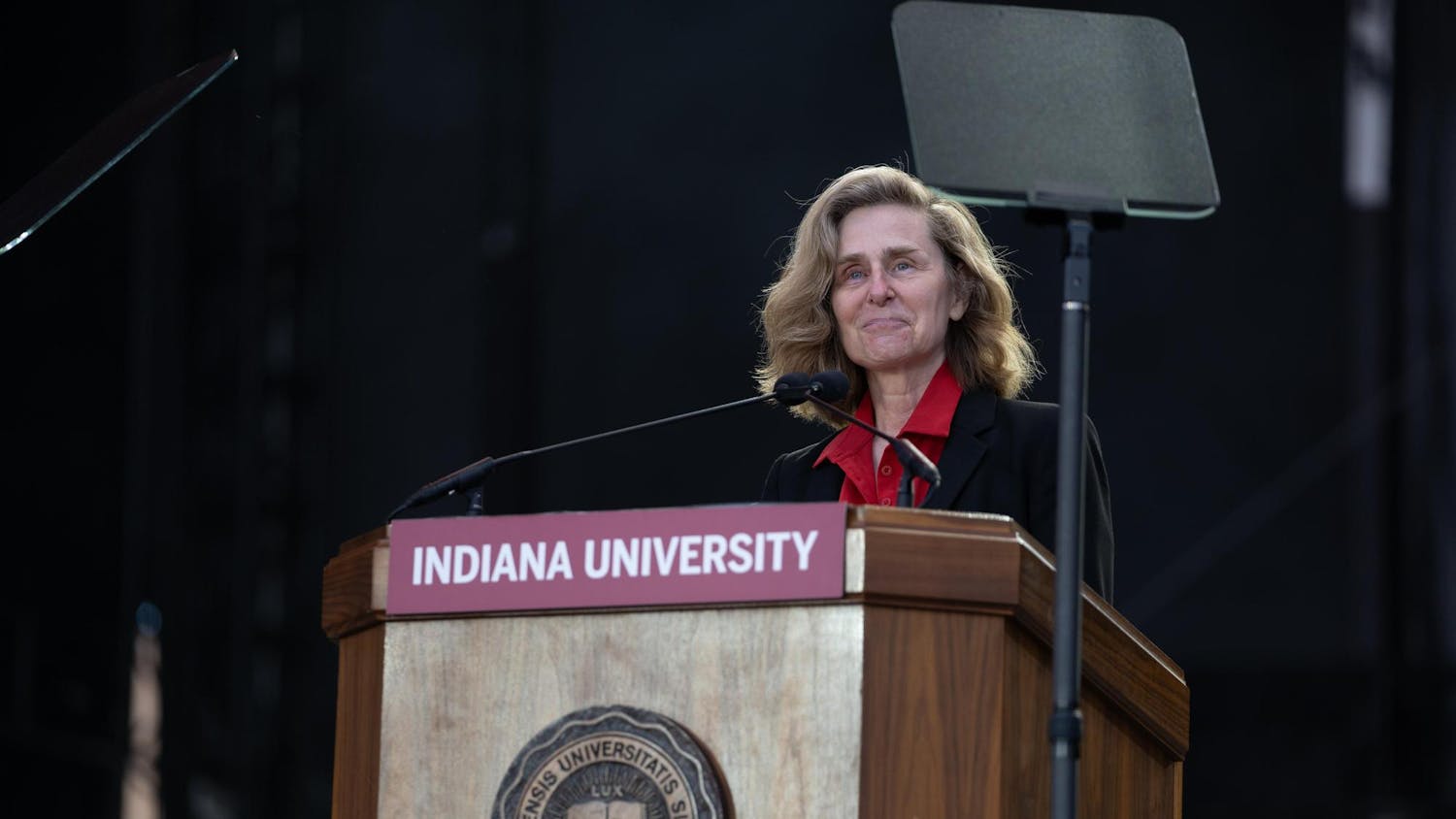Various minerals and dozens of fossils — from crinoids to dinosaur vertebra — lined the walls of the Geological Sciences building’s foyer in celebration of the reopening of the IU Paleontology Collection.
Student, faculty and other fossil aficionados braved the rain to explore IU’s collections at the open house from 1 to 6 p.m. Apr. 30.
Collections are housed across campus in the Geological Sciences building, the basement of the Student Building and the Biology Department at the Smith Research Center. Paleontology has been part of Indiana and IU’s history for more than 100 years, said David Polly, professor of Geological Sciences and curator of the IU Paleontological Collection.
“It is, in a broad sense, the study of ancient life,” Polly said. “One of the perspectives of a paleontologist that differs from that of a biologist is that we’re very much concerned with the history of life.”
The collection was founded in 1903 by renowned paleontologist and IU alum Edgar Cummings. He and students like J. J. Galloway and Robert Shrock, a famous paleontologist and sedimentary geologist, spent years collecting samples from an area along the border of Indiana and Ohio. Here, old and new rock met and could be studied side-by-side.
These samples were used to map the rise and fall of sea levels and track the diversity of species, among other things. They used a chronology called geological time, which is different from that of a biologist.
“We arrange time from the bottom, up,” Polly said.
He described the three major time periods with which the Paleontology Collection is concerned: Paleozoic, the oldest, was the “radiation of life on Earth”; Mesozoic, the time of the dinosaurs; and Cenozoic, the “age of mammals.”
Thanks to data collected by Cummings and those like him, paleontologists made rough timelines of Earth and have found the mass extinction that killed the dinosaurs was not the biggest in history, as previously thought.
In fact, the largest mass extinction occurred at the end of the Paleozoic period, due to abrupt climate and habitat change from shifting continents.
“It’s quite well documented in Indiana geology and in our own collection,” Polly said.
The collection itself was recently reorganized and moved up a few floors from the cramped, messy basement it previously occupied. Grants from the University helped renovate the fifth floor of the Geological Sciences building and finance the appointment of the new collection manager, Gary Motz.
“The collection had previously been poorly handled,” Polly said. “This is a celebration of bringing this collection back to life — pardon the pun.”
Because the collection is a repository, it houses artifacts that hold scientific value.
“It’s open to essentially the global research community to come use,” Polly said. “We have holdings from every continent but Antarctica.”
There are 1.3 million specimens in the collection. The campus’ other repositories are well-stocked with specimens as well, he said. The IU Herbarium at the Smith Research Center has 140,000 vascular plants, and the Zooarchaeology Collection in the Student Building has 10,000 vertebral species. As well as physically housing the artifacts, each collection has begun to digitize their holdings.
The Paleontology and the Zooarchaeology Collections use 3D laser scanners to fully digitize specimens for manipulation on a screen, which allows researchers and others who cannot physically travel to the collections to view their pieces online. The Zooarchaeology Collection also employs photogramatry, which allows researchers to reconstruct the object using photos in place of laser scans.
These scans and images can then be 3D printed, and they can be manipulated physically so researchers can get the feel of the artifact without damaging the original.
William Ausich, a professor emeritus at Ohio State University, closed the open house with a keynote speech on fossils’ importance to the study of extinction.
“We’re now entering the sixth great extinction, and it’s an inconvenient truth that humans are partially the cause of it,” Ausich said, referencing the film based on former Vice President Al Gore’s campaign against global warming. “This is not the only time there’s been global change.”
He urged against complacency, as history suggests extinction occurs much quicker than global recovery.
“Maybe we can go back in the fossil record and see what happened in the past,” Ausich said. “The reason we have museums is because we need access to those specimen.”






